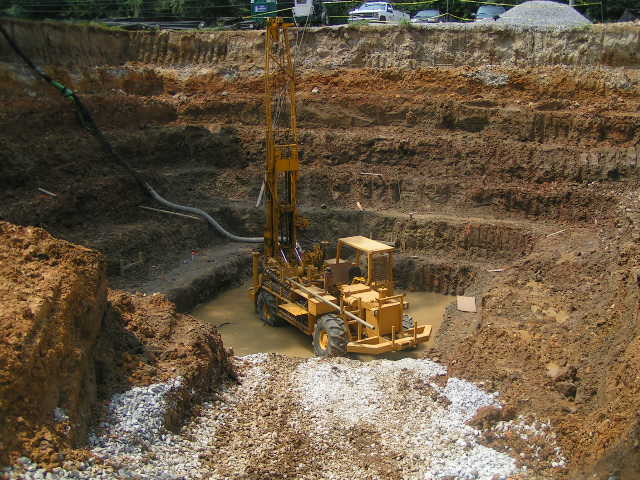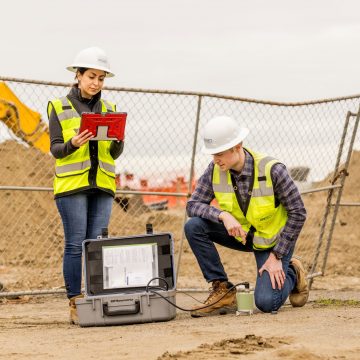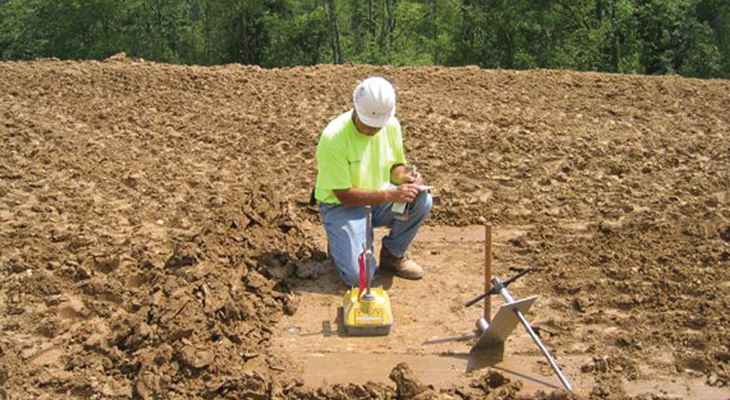Consulting Engineers Fundamentals Explained
Table of ContentsFacts About Consulting Engineers RevealedConsulting Engineers Fundamentals ExplainedA Biased View of Consulting EngineersThe Single Strategy To Use For Consulting EngineersAbout Consulting EngineersMore About Consulting EngineersNot known Facts About Consulting Engineers
Rock mechanics is the study of the statics and dynamics of rocks and rock masses. Engineering rock mechanics is the research of the statics and dynamics of rocks and rock masses in anticipation of the results being applied to engineering.Dirt auto mechanics is the research study of the statics and dynamics of dirts. Geotechnical design is the procedure of design with rocks and/or soils2.

Top Guidelines Of Consulting Engineers
The cave is to be created in acid rock, yet it has a large span (of 61 m compared to the normal 1525 m) and lies near to the surface area. Under these scenarios, we would certainly need to take into consideration in the initial instance any type of instability that may develop from rock obstructs dropping by gravity from the cave roofing system.

The lengthy axis of the cave axis was related vertical to the optimum horizontal tension of 3.54.0 MPa which assisted to stabilize the rock blocks in the roofing. After excavation of 140,000 m3 of rock and setup of the interior fittings, the Gjvik Olympiske Fjellhall can seat 5300 people. The impression one has inside the cave is the very same as that in a building constructed above ground.
Facts About Consulting Engineers Revealed
These records are tailored to fulfill the details demands of a project and consist of style parameters and suggestions for the building and construction of an array of manufactured structures. As giving working as a consultant solutions covering areas such as incline security and load-bearing capabilities for various materials, these designers embark on research and advancement tasks to improve methods, equipment, materials expertise and evaluation covering entire lifecycles.
Engineering the homes and technicians of rocks including the application of characteristics, fluid auto mechanics, kinematics and product technicians. This brings together geology, soil and rock technicians, and structural design for the design and building of foundations for a variety of civil design projects. This field entails predicting the performance of foundation soil and rock to a tons enforced by a framework, while taking into consideration performance, economic situation and safety.
Consulting Engineers Fundamentals Explained
However, rates of pay usually increase as your knowledge and skills expand, with standards directing to a graduate starting salary of in between 18,000 and 28,000 each year in the UK. This climbs to 26,000 to 36,000 with a few years of experience and then getting to 40,000 to 60,000+ for senior, chartered or master designers.

The Only Guide for Consulting Engineers
When starting, these engineers will often tend to deal with much less complex projects, accumulating knowledge and experience ready for more challenging work later on. Geotechnical designers often tend to be experts in details locations as they expand in experience, concentrating on certain facilities such as trains, roadways or water. These engineers likewise work with renewable resource, offshore and onshore oil and gas, nuclear power, and more.
The moment required to come to be a geotechnical designer depends upon where you are based, where you research study and what level of education you intend to obtain prior to going into the workplace. Are you going to explore an instruction, take an university degree or service in the direction of a Master's or PhD? Nevertheless, generally-speaking it takes 3-4 years to reach the basic needs to begin an occupation as browse around this web-site a geotechnical engineer.
9 Simple Techniques For Consulting Engineers
Prior to a construction job starts, geotechnical engineers are charged with assessing the soil and rock problems at the site. Soil is not simply dirt; it's a complex material with differing properties, such as thickness, compaction, communication, and friction. These properties can substantially impact the stability and safety and security of a structure.
The option of foundation typewhether it's shallow (e.g., spread out footings) or deep (e (Consulting Engineers).g., heaps or caissons)relies on the site's soil problems and the framework's load-bearing needs. For skyscrapers, deep foundations are frequently necessary to get to steady soil or rock layers. These structures transfer the structure's weight to a preferable depth, protecting against negotiation and making sure stability
The Ultimate Guide To Consulting Engineers
One usual ground improvement method is soil compaction. Grouting, one more strategy, entails injecting a cement-based material into the ground to support loosened dirts.